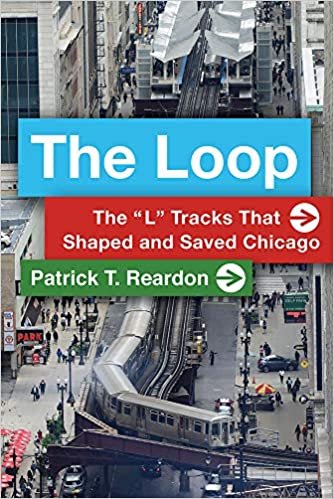Book Review: The Loop: The “L” Tracks that Shaped and Saved Chicago
The Loop: The “L” Tracks that Shaped and Saved Chicago. Patrick J. Reardon. Southern Illinois University Press, December 17, 2020, Trade Paperback, 304 pages.
Reviewed by David Steven Rappoport.
The Loop is a meticulous and captivating Chicago tale of visionary ambition seasoned with corruption; a “biography of a structure that has shaped and saved Chicago,” a “stumpy 2.1-mile-long rectangle of railroad tracks that runs twenty feet . . . above four downtown streets.”
Reardon, “Chicago’s pre-eminent urban affairs journalist” and now a freelance writer and poet, discusses “how the elevated Loop came to be, how it rooted Chicago’s downtown in a way unknown to other cities, how it played an important role in unifying the ‘schizophrenic’ three-sided city, and how it protected Chicago’s downtown—and the city itself—from the full effects of suburbanization . . . during the second half of the twentieth century.” In so doing, he argues the Loop has become as iconic to Chicago as the Brooklyn Bridge is to New York City.
The chaotic history of transportation in Chicago includes horse-drawn conveyances and cable car “loops” that preceded the “L” system with frequent and dangerous sudden stops and starts and occasional collisions. The cable cars were replaced by trolleys and then by “Union Loop” elevated trains in 1897.
The book is comprehensive and full of anecdotes and Chicago characters. One character is Charles T. Yerkes, a man proclaimed a “proud and haughty bandit” by one commentator and a “five-star, aged-in-oak, 100-proof bastard" by another. Yerkes maneuvered the Union Loop into existence for personal gain but, in so doing, transformed Chicago. Yerkes was also a central figure in the development of the London tube. It seems he is remembered for this accomplishment in England but perhaps because of his veniality – excessive even by Chicago standards – he is forgotten here. Canadian-born John Alexander Low Waddell, a man with a “robust constitution…not known for his humility,” was a civil engineer hired by Yerkes in 1894. Waddell, who is considered a seminal figure in his field, designed the system and went on to be decorated in four countries for his work on other projects. Curiously, his work on the Loop is also apparently largely forgotten.
In the latter parts of the book, Reardon describes how the “Union Loop” became “the Loop.” He discusses the impact of the “elevated structure on the central business district” as well as more broadly on Chicago, detailing a complex tale of planning, happenstance, and politics as the Loop misses expansion and avoids removal.
The Loop will engage the casual Chicago reader as well as the academic, and serves as an important contribution to Second City history. With Reardon driving, The Loop reliably and entertainingly takes us where we need to go.

